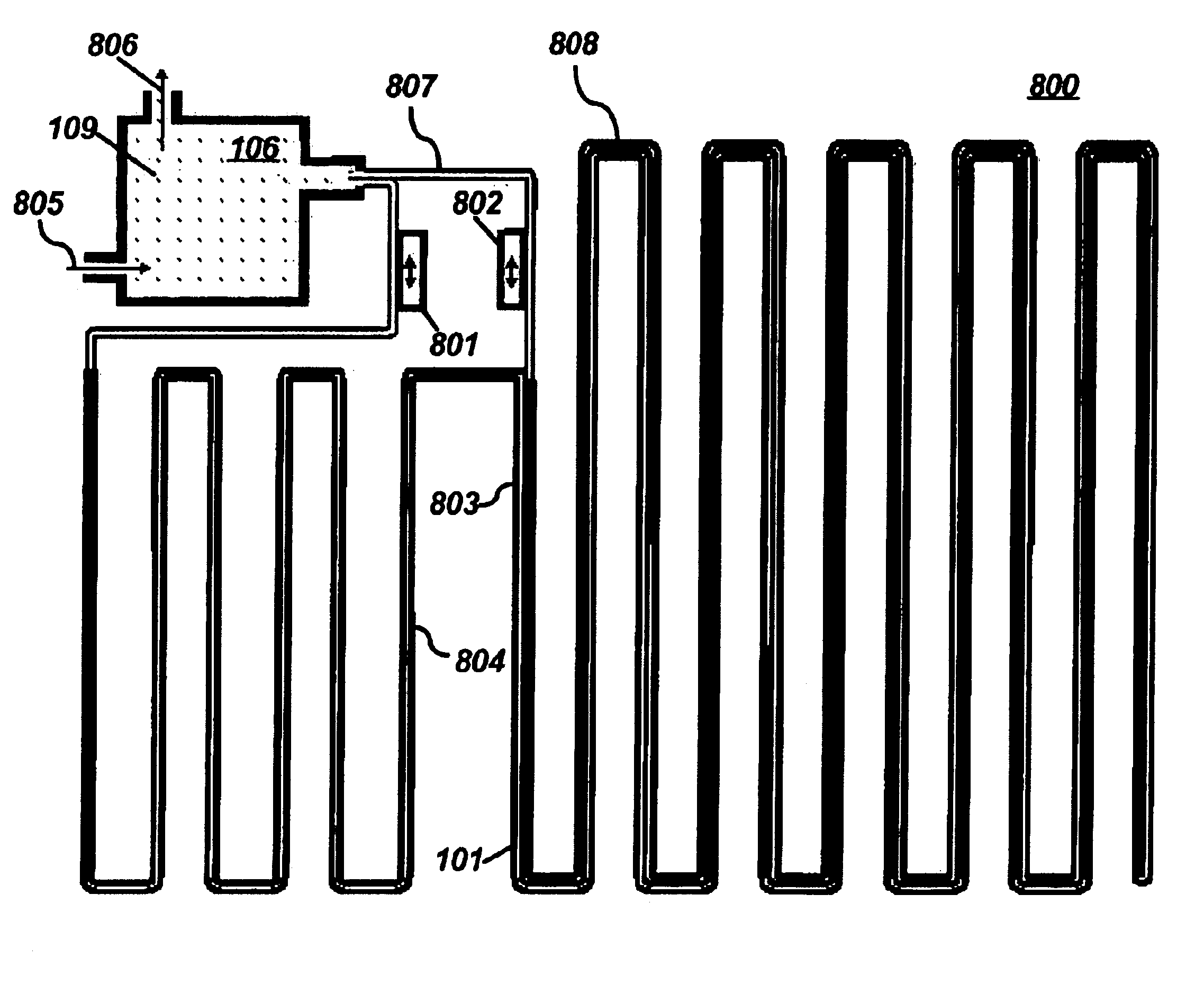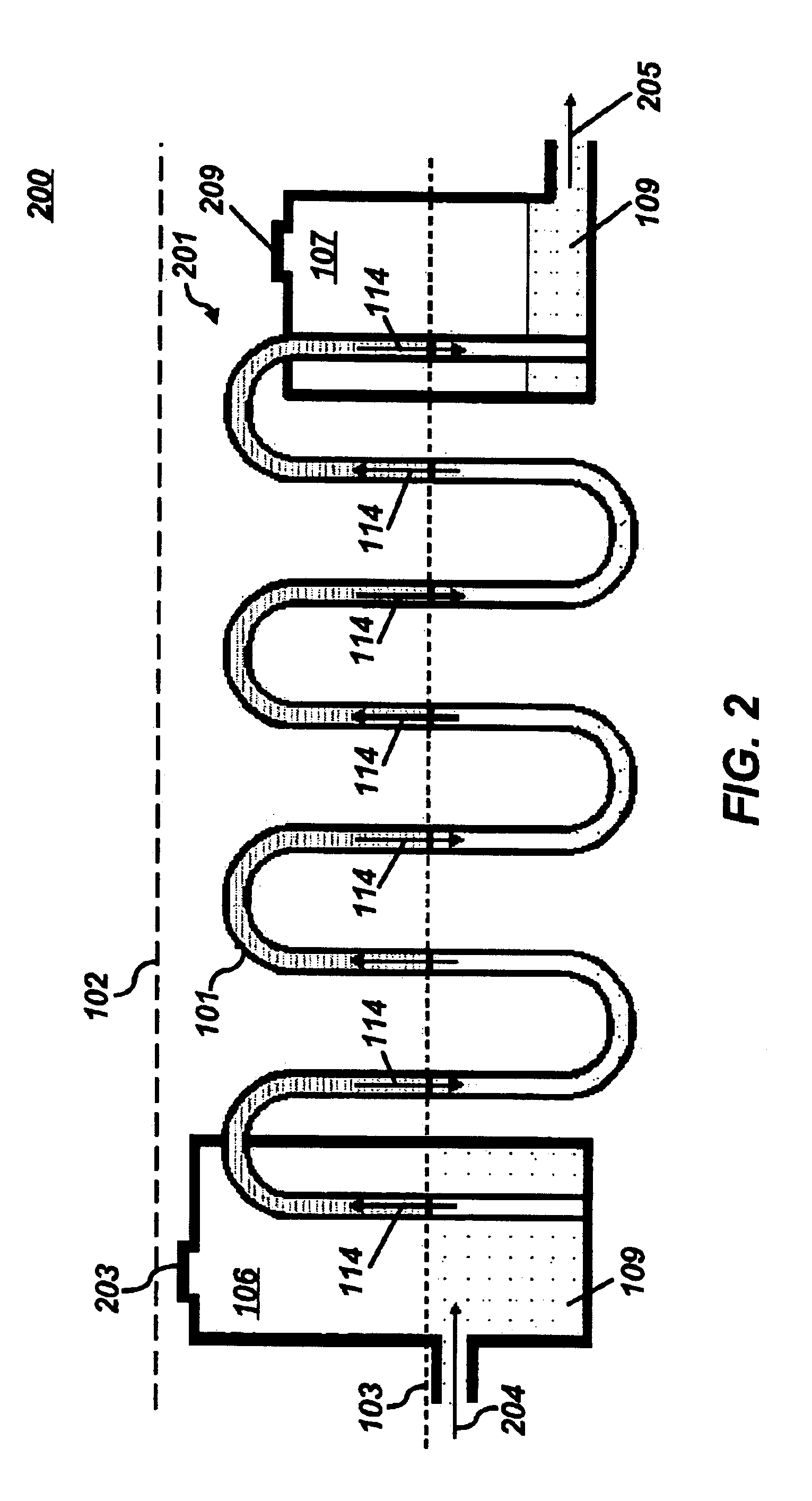Irrigation and drainage based on hydrodynamic unsaturated fluid flow
a technology of unsaturated fluid flow and irrigation system, applied in the direction of water supply installation, bends, machines/engines, etc., can solve the problems of insufficient field irrigation advancement, inability to achieve such advancement, and inability to meet the needs of water supply, etc., to achieve enhanced microporosity and high self-sustaining function
- Summary
- Abstract
- Description
- Claims
- Application Information
AI Technical Summary
Benefits of technology
Problems solved by technology
Method used
Image
Examples
Embodiment Construction
[0087]The particular values and configurations discussed in these non-limiting examples can be varied and are cited merely to illustrate embodiments of the present invention and are not intended to limit the scope of the invention.
[0088]The figures illustrated herein depict the background construction and functioning of a reversible unsaturated siphon having a porous physical microstructure for multidirectional and optionally reversible unsaturated flow, in accordance with one or more embodiments of the present invention.
[0089]FIG. 1 illustrates a sectional view of a hydrodynamic system 100 illustrating saturation zones and unsaturation zones in accordance with a preferred embodiment of the present invention. Hydrodynamic system 100 illustrated in FIG. 1 is presented in order to depict general capillary rise theory and the functioning of a U-shaped upside down reversible unsaturated siphon 101, which is also illustrated in FIG. 1.
[0090]System 100 of FIG. 1 demonstrates the use of ca...
PUM
 Login to View More
Login to View More Abstract
Description
Claims
Application Information
 Login to View More
Login to View More - R&D
- Intellectual Property
- Life Sciences
- Materials
- Tech Scout
- Unparalleled Data Quality
- Higher Quality Content
- 60% Fewer Hallucinations
Browse by: Latest US Patents, China's latest patents, Technical Efficacy Thesaurus, Application Domain, Technology Topic, Popular Technical Reports.
© 2025 PatSnap. All rights reserved.Legal|Privacy policy|Modern Slavery Act Transparency Statement|Sitemap|About US| Contact US: help@patsnap.com



